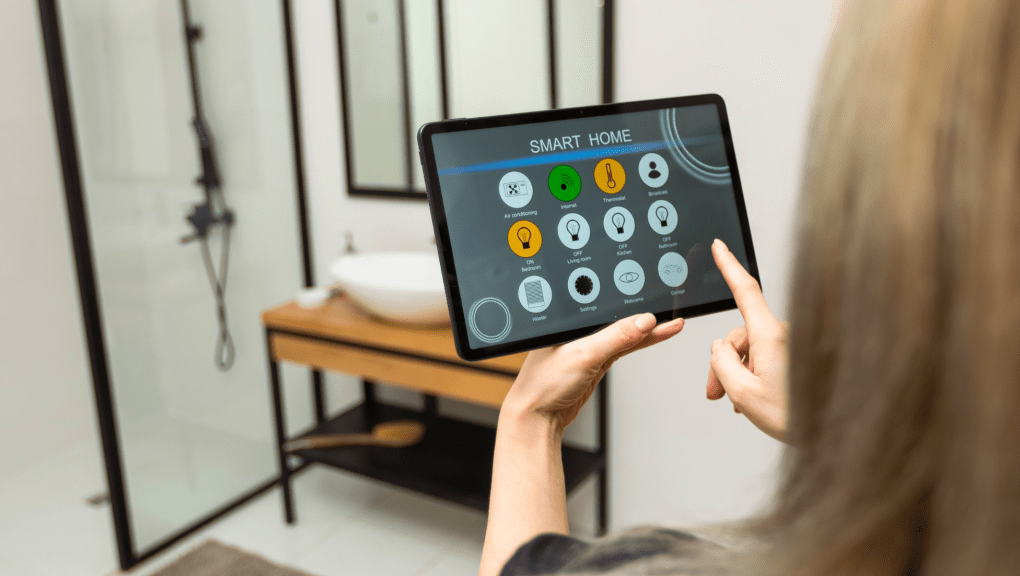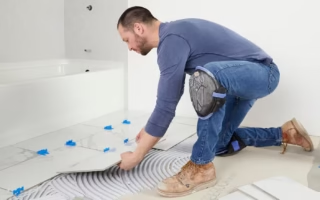Plumbing isn’t usually the first thing people think of when they hear the word “smart.” Yet behind the scenes, smart plumbing systems are reshaping how homes handle one of their most essential needs — water. No more guessing where leaks start, no more high water bills from hidden drips, and no more late-night plumbing emergencies.
By blending Internet of Things (IoT) sensors, artificial intelligence (AI), and automated control systems, today’s plumbing setups can detect leaks, monitor water use, and even shut off valves automatically. What was once manual and reactive is now proactive and data-driven — helping homeowners save time, money, and peace of mind.
The Problems Traditional Plumbing Couldn’t Fix
Hidden Leaks That Go Unnoticed
In older plumbing systems, leaks often go undetected until visible damage appears. Water may seep behind walls, under floors, or through ceilings, slowly causing rot and mold. By the time someone notices, the repair costs can be thousands of dollars. Traditional inspections depend on physical checks and human judgment — both limited in precision.
Wasted Water and Skyrocketing Bills
A single dripping faucet can waste hundreds of gallons of water per month. Undetected pipe leaks waste even more, driving up both utility costs and environmental impact. Because conventional plumbing can’t track usage in real time, most homeowners find out too late, when the bill arrives.
Reactive Repairs Instead of Prevention
Traditional plumbing focuses on fixing problems after they happen. There’s no built-in system to alert you early. This reactive approach often leads to emergency calls, water damage, and stress — all preventable with the right monitoring tools in place.
How Smart Plumbing Systems Change Everything
Real-Time Leak Detection and Alerts
Modern smart leak detectors use IoT sensors placed near Utility Pipe Supply, water heaters, and appliances. These sensors monitor pressure, humidity, and flow rates. If an abnormal pattern occurs — like a sudden drop in pressure or unexpected water flow — the system sends an instant alert to your smartphone. Some systems, powered by AI-based algorithms, can even tell the difference between a running shower and a burst pipe.
Automated Shut-Off Valves
One of the most revolutionary features of smart plumbing is automatic shut-off control. Once the system identifies a major leak, it can turn off the main water supply in seconds. This quick response prevents flooding and minimizes water loss, something traditional plumbing simply can’t do.
Constant Water Usage Tracking
Smart meters now track daily water consumption with remarkable accuracy. Homeowners can see exactly how much water their household uses, broken down by time or device. This transparency encourages sustainable habits while highlighting unusual usage spikes that may signal leaks or inefficiencies.
The Technology Powering Smarter Plumbing
IoT Sensors for Constant Monitoring
At the heart of every smart plumbing system are Internet-connected sensors. These small devices collect continuous data on flow rate, temperature, and water pressure. They communicate with central hubs using Wi-Fi or Bluetooth, feeding data to cloud platforms for instant analysis.
AI and Predictive Analytics
Artificial intelligence (AI) helps smart plumbing systems learn from patterns. For example, if water pressure drops in a certain section every night, AI can flag that pattern as abnormal and suggest a maintenance check. Over time, predictive analytics help prevent leaks before they start — not just detect them after the fact.
Integration with Smart Home Ecosystems
Many systems now integrate with smart assistants like Amazon Alexa or Google Home, allowing users to check water stats or shut off their water supply using voice commands. This seamless connection between devices turns an everyday necessity into an intelligent, responsive network.
Problems Solved by Smart Plumbing
Stopping Water Waste Before It Starts
Because these systems constantly analyze water use, they catch irregularities that people miss. A small but consistent flow at 2 a.m.? That’s a potential leak. A sharp pressure drop in one area? There’s a possible pipe burst. Early detection prevents waste and saves homeowners from long-term water damage.
Eliminating Guesswork in Repairs
Smart systems provide detailed diagnostics, helping plumbers locate exact problem areas. Instead of tearing through walls searching for leaks, technicians can use data insights and sensor readings to pinpoint the issue fast. This saves time, money, and unnecessary property damage.
Boosting Home Safety and Property Value
Beyond convenience, smart plumbing protects one of your most valuable investments — your home. Preventing leaks means avoiding mold growth, structural damage, and expensive restorations. For buyers, homes with integrated plumbing tech often carry higher resale value and lower insurance risks.
Challenges Still Holding It Back
High Upfront Costs
Installing a smart plumbing system isn’t cheap. IoT sensors, smart valves, and AI software subscriptions can cost hundreds or even thousands of dollars. While the investment pays off over time through savings and protection, the initial setup remains a hurdle for many homeowners.
Connectivity and Compatibility Issues
Smart devices rely on strong internet connections. Poor Wi-Fi coverage or incompatible routers can interrupt monitoring, delaying alerts during critical moments. Integration between older plumbing systems and newer tech may also require professional adjustments.
Data Security and Privacy Concerns
Like all connected systems, smart plumbing collects data — about your water use, household habits, and more. Some users worry about how that data is stored or who can access it. Ensuring encrypted communication and privacy compliance is essential for trust and long-term adoption.
The Future of Smart Plumbing in Modern Homes
Smarter, Smaller, and More Affordable
As IoT technology becomes more affordable, smart plumbing systems will move from luxury to standard. Compact sensors and improved AI will make installation easier and more cost-effective for average homeowners.
Predictive Maintenance for Entire Communities
Imagine a city where local plumbing systems communicate with one another to predict water leaks or pressure drops across neighborhoods. Municipal water management could become smarter, reducing waste on a massive scale and improving infrastructure efficiency.
A Sustainable Shift in Water Use
As more people embrace these systems, global water conservation will improve. AI-driven optimization will help detect overuse, promote awareness, and support eco-friendly behavior — one household at a time.
Conclusion
Smart plumbing systems might not make headlines like electric cars or solar panels, but their impact runs deep. They address one of the oldest problems in home maintenance — hidden water leaks — with precision and intelligence.
By combining IoT connectivity, AI learning, and automatic prevention tools, modern plumbing is moving from a reactive service to a proactive guardian. It’s not just about fixing leaks anymore; it’s about stopping them before they start.
So yes, smart plumbing is quietly revolutionizing the way homes stay leak-free. It’s the kind of innovation that doesn’t need to make noise — because the silence of a dry, damage-free home says it all.
Do Read: Why Your Grass Won’t Grow Even After Tree Removal — and What That Stump Has to Do With It.




